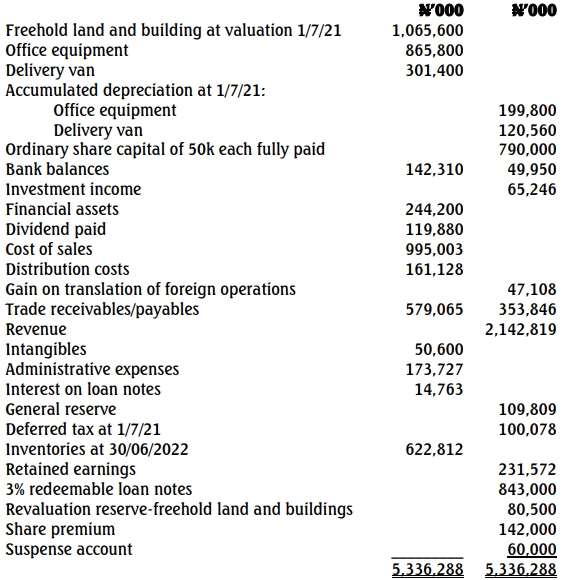- 20 Marks
CIB GH – INTRODUCTION TO ACCOUNTING – APRIL 2024 – L1 – Q1 – Users of Accounting Information and Financial Ratios
State five users of accounting information and their needs; calculate specified ratios from given financial statements and explain gearing implications.
Question
a) State any FIVE (5) users of Accounting Information and their information needs. (5 marks) b) The following is a summary of the Final Accounts of Balance Ltd for the year ended 31st December 2023. Statement of Profit or Loss Account for the year ended 31st December 2023
| GHȼ | GHȼ | |
|---|---|---|
| Turnover | 1,400,000 | |
| Cost of Sales | (800,000) | |
| Gross Profit | 600,000 | |
| Distribution Costs | 64,000 | |
| Administrative Expenses | 140,000 | |
| (204,000) | ||
| Operating Profit | 396,000 | |
| Interest Payable | 50,000 | |
| Profit Before Tax | 346,000 | |
| Company Tax | (58,000) | |
| Profit After Tax | 288,000 | |
| Profit and Loss Brought Forward | 40,000 | |
| 328,000 | ||
| Ordinary Dividend | (250,000) | |
| Transfer to Reserves | (52,000) | |
| Retained Profit | 26,000 |
Statement of Financial Position as at 31st December 2023
| GHȼ | |
|---|---|
| Non-Current Assets (Net) | 1,100,000 |
| Current Assets | |
| Inventory | 180,000 |
| Receivables | 100,000 |
| Bank | 60,000 |
| 340,000 | |
| Total Assets | 1,440,000 |
| Equity and Reserves | |
| GHȼ1 Ordinary Shares | 450,000 |
| General Reserve | 94,000 |
| Retained Earnings | 26,000 |
| 570,000 | |
| Non-Current Liabilities | |
| Long Term Loans (4%) | 550,000 |
| Current Liabilities | |
| Payables | 62,000 |
| Dividends | 200,000 |
| Taxation | 58,000 |
| 320,000 | |
| Total Equity and Liabilities | 1,440,000 |
You are required to: Calculate each of the following Ratios (where appropriate calculations should be shown to two decimal places) and answer the question in vii
i) Sales to Capital Employed (2 marks)
ii) Liquid (Acid Test) Ratio (1 mark)
iii) Interest Cover (2 marks)
iv) Dividend Cover (2 marks)
v) Gearing Ratio (2 marks)
vi) Earnings Per Share (2 marks)
vii) Explain the implications of the level of Gearing for the Ordinary Shareholders of Balance Ltd. (4 marks)
(Total: 20 marks)
Find Related Questions by Tags, levels, etc.


